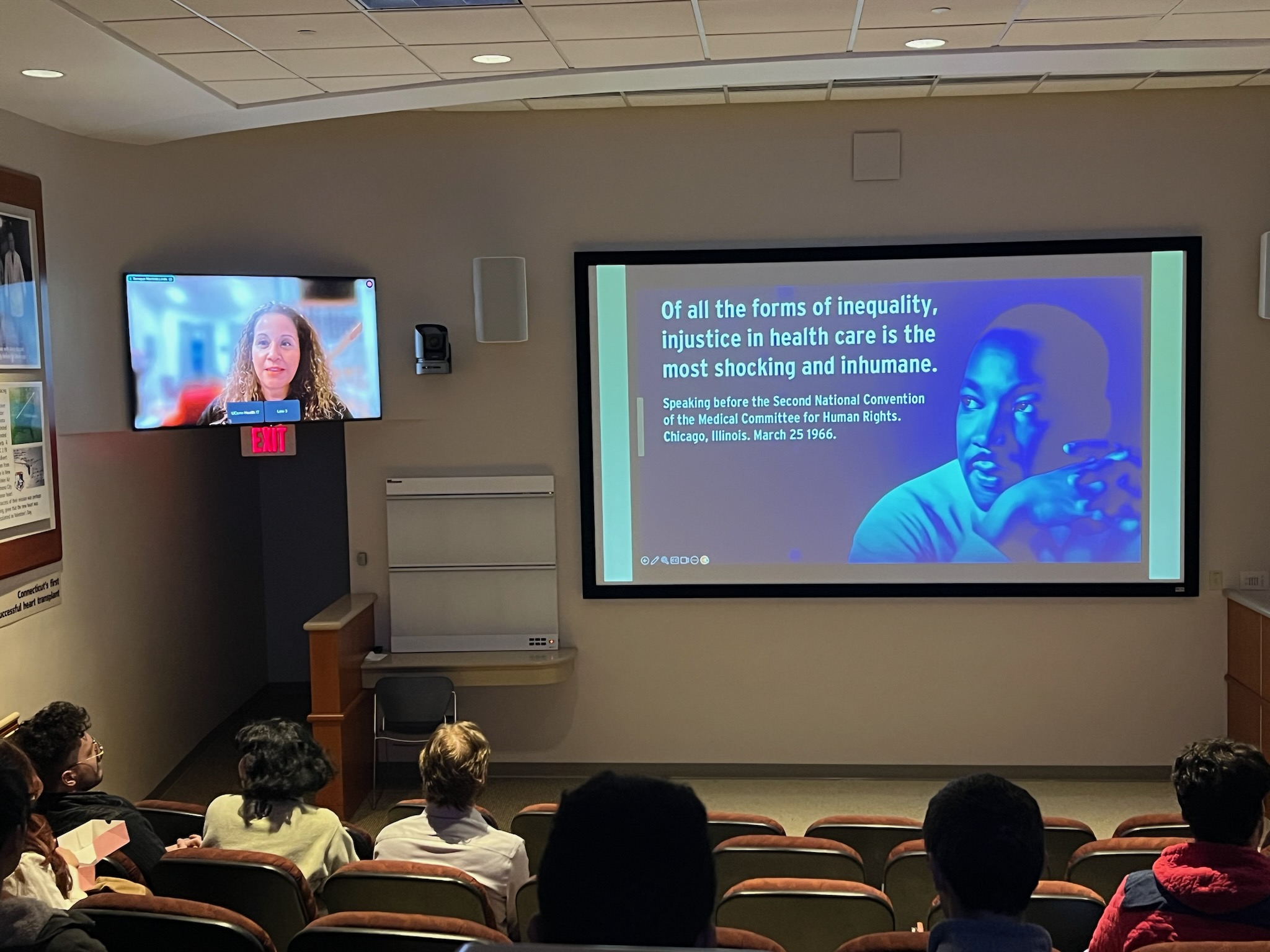Are you concerned about the number of medications a friend or relative takes? Perhaps you feel this way about your own medications.
People take more medications today than ever before. Increasingly, health professionals say it is time to re-evaluate our reliance on prescription drugs, over-the-counter medications, and even supplements, especially when the risk of dangerous side effects outweighs their potential benefit.
The problem is particularly acute in older individuals, who tend to accumulate medications for different ailments over time. Nearly 40 percent of people age 65 or older are taking five or more medications daily. Physicians may not be aware of medications that were prescribed by other specialists, or medications that were started when a patient was hospitalized.

“Physicians do a great job diagnosing problems and initiating treatments,” says clinical professor Sean Jeffery, a geriatric pharmacy specialist in UConn’s School of Pharmacy. “But at some point, health care providers need to take a step back and say, ‘It’s time to think about all of these medications. Are they still appropriate, do they still benefit the patient, does the risk now outweigh the benefit, and should we consider backing off or changing them?’”
Jeffery is one of a growing number of clinicians advocating “deprescribing,” which is the process by which health professionals taper people off medications they no longer need. One reason for deprescribing is that a drug’s effectiveness can lessen over time due to the physiological changes that come with aging, says Jeffery. A 2015 report in the Journal of the American Medical Association indicates that approximately 1 in 5 drugs commonly taken by older people may be inappropriate. That figure increases to 1 in 3 when residents live in elder care facilities.
“Most seniors experience multiple health concerns over the course of their life,” says Jeffery, who co-founded the Coalition for Senior Medication Safety, a professional group that provides medication management services to older adults. “Maybe it’s arthritis or heart disease or a thyroid problem or depression, and for these conditions you may be placed on medication. But as you get older, your body changes. You may not be able to metabolize those medications in your 80s like you did in your 50s, you may not eliminate them as well through your kidneys or liver, or your brain may be more susceptible to their side effects, which can cause you to get confused, or have an increased risk of falling.”
For example, Jeffery says, an older person may take Ativan or Ambien to help themselves relax or sleep. But both of those medications are considered high-risk in the elderly and can cause dizziness and confusion. If that same patient is also taking a diuretic for another health condition, they may get up frequently during the night to use the bathroom and – with the sleep aid in their system – be at considerable risk for a fall.
“If you fall and break your hip when you’re in your 80s, that is a serious health situation and often leads to a general decline in health,” says Jeffery. “So perhaps a provider should consider alternate approaches to help the patient sleep better.”
Sometimes medications are started with no clear end-point. For example, the widely prescribed class of drugs called proton pump inhibitors are used to reduce acid in the stomach and to treat heartburn and esophageal reflux. Common brand names include Nexium, Prilosec, and Prevacid. Yet 50 percent of the individuals taking these medications don’t need them long-term, says Jeffery. That is important because, when taking them long-term, the risk for bone loss, fractures, and bacterial infections increase. Similarly, cholesterol medications, while very beneficial in patients less than 80 years of age, are of questionable efficacy in those greater than 80, and may even have more side effects such as muscle weakness in older patients.
The question, Jeffery says, becomes whether a patient at an advanced age is still receiving enough benefit from a medication to warrant risking considerable side effects. If the answer is no, then the medication should be stopped.
“It really comes back to the patient’s goals of care,” Jeffery says. “What is the patient’s projected lifespan, what are the things that are important to them at this point in their lives, and are their medications actually helping them achieve those goals?”
Convincing patients to stop a drug isn’t always easy in a culture where there seems to be a pill for almost every conceivable ailment. Patients have come to expect medications from their doctor when they aren’t feeling well. They can become reliant on a drug and are often reluctant to stop taking it, even though it may no longer be medically necessary.
The first step in deprescribing is conducting a complete inventory of all prescribed, over-the-counter, and naturopathic medications a patient is taking. Setting an annual date for a medication review would be good, such as every New Year’s Day or a person’s birthday. Then health professionals must prioritize which ones should be continued, which ones stopped, and discuss those possible changes with the patient.
At UConn, Jeffery incorporates deprescribing in his geriatric pharmacy material for third-year pharmacy students. Students are introduced to the concepts of polypharmacy (the concurrent use of four or more medications by a patient being treated for different ailments), how to assess the appropriateness of prescribing in the elderly, and how to engage patients in deprescribing.
The American Geriatric Society publishes a list of medications that are potentially harmful to seniors to assist medical professionals in making their determinations. The list, known as the BEERS Criteria, was updated in 2015. The Canada-based website, deprescribing.org, is also a good resource for people interested in learning more about the deprescribing movement and how to discuss reducing their medications with their doctors.
Here in the U.S., Jeffery – who chairs the American Geriatric Society’s Polypharmacy Special Interest Group – says interest in deprescribing is growing along with the aging of our population. He points to a recent Public Policy Institute session he attended that was sponsored by the AARP and focused on deprescribing and other strategies to address polypharmcy. Some options being considered include requiring all elder care facilities to assess a patient’s complete medication status upon admission to maintain their accreditation; greater sharing of medication records between providers and specialists; and increasing the role of pharmacists, to allow them easier access to providers to discuss medication concerns.
Jeffery would like to see a national effort to raise people’s consciousness about medication concerns through public service advertisements, similar to what is done for tobacco and alcohol.
“If you ask people do they really want to take medication on a daily basis, 99 percent of them will say, ‘No,’” Jeffery says. “By simplifying medication regimens to what matters most now, patients will be in a better position to manage the medications they do need.”



